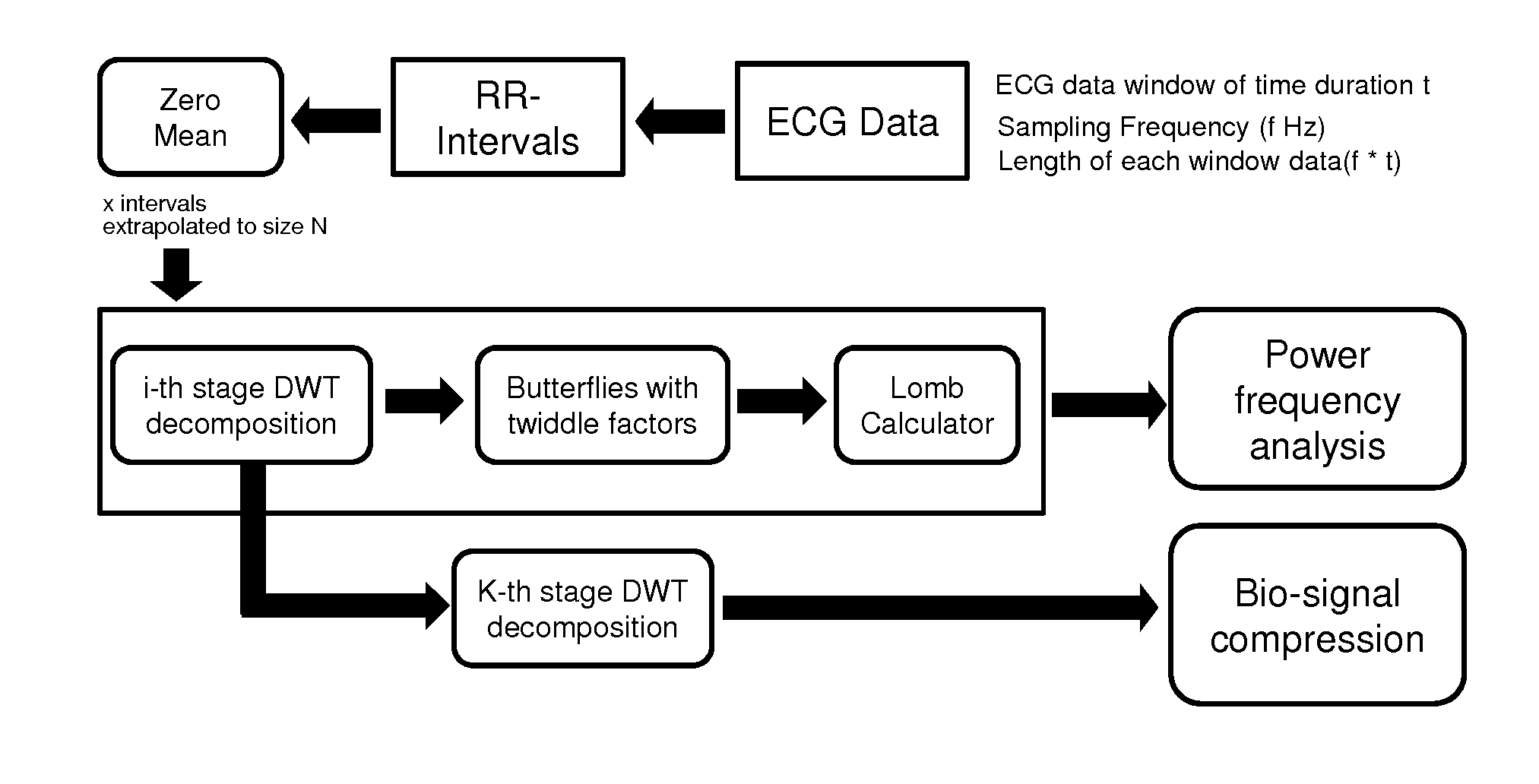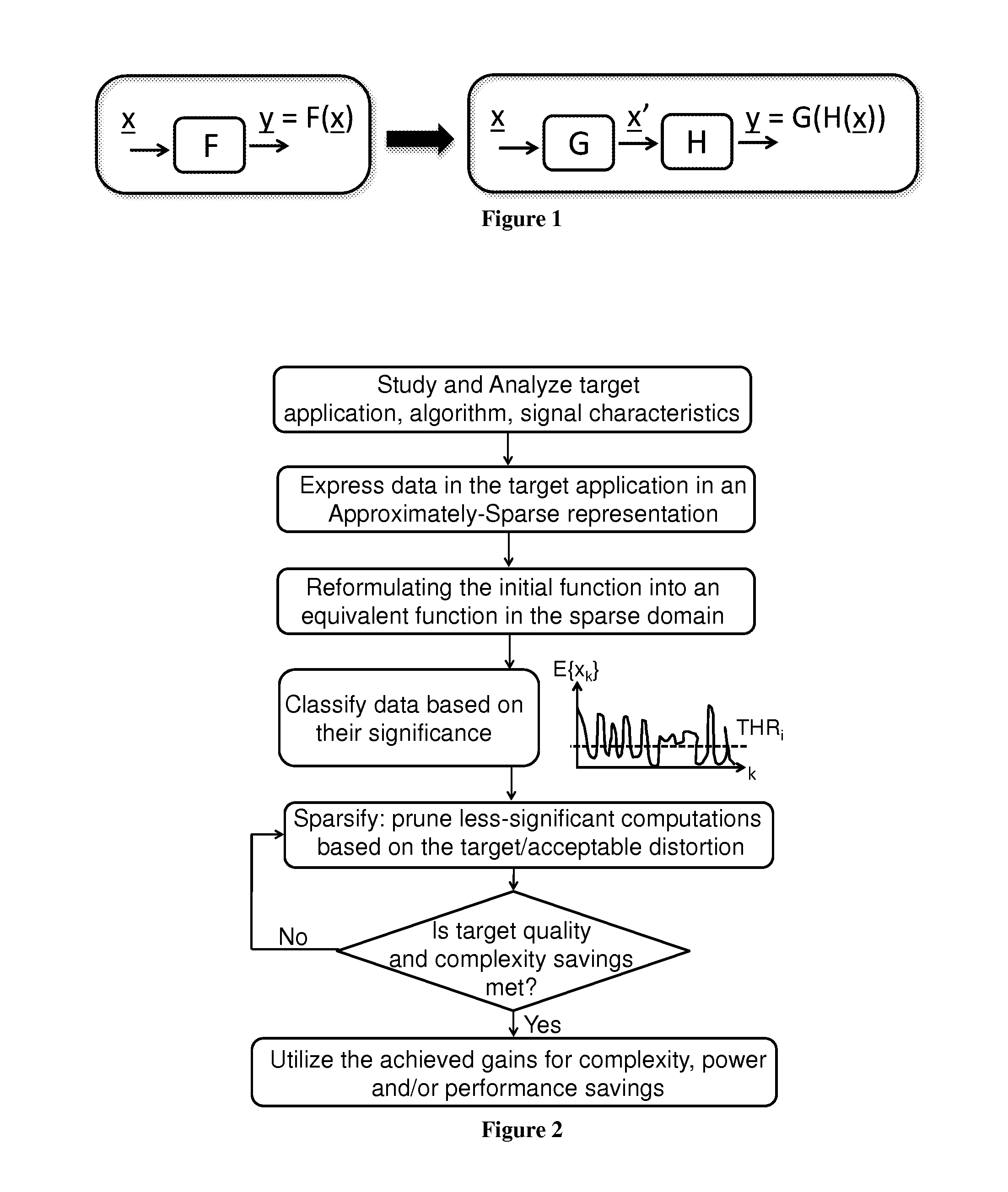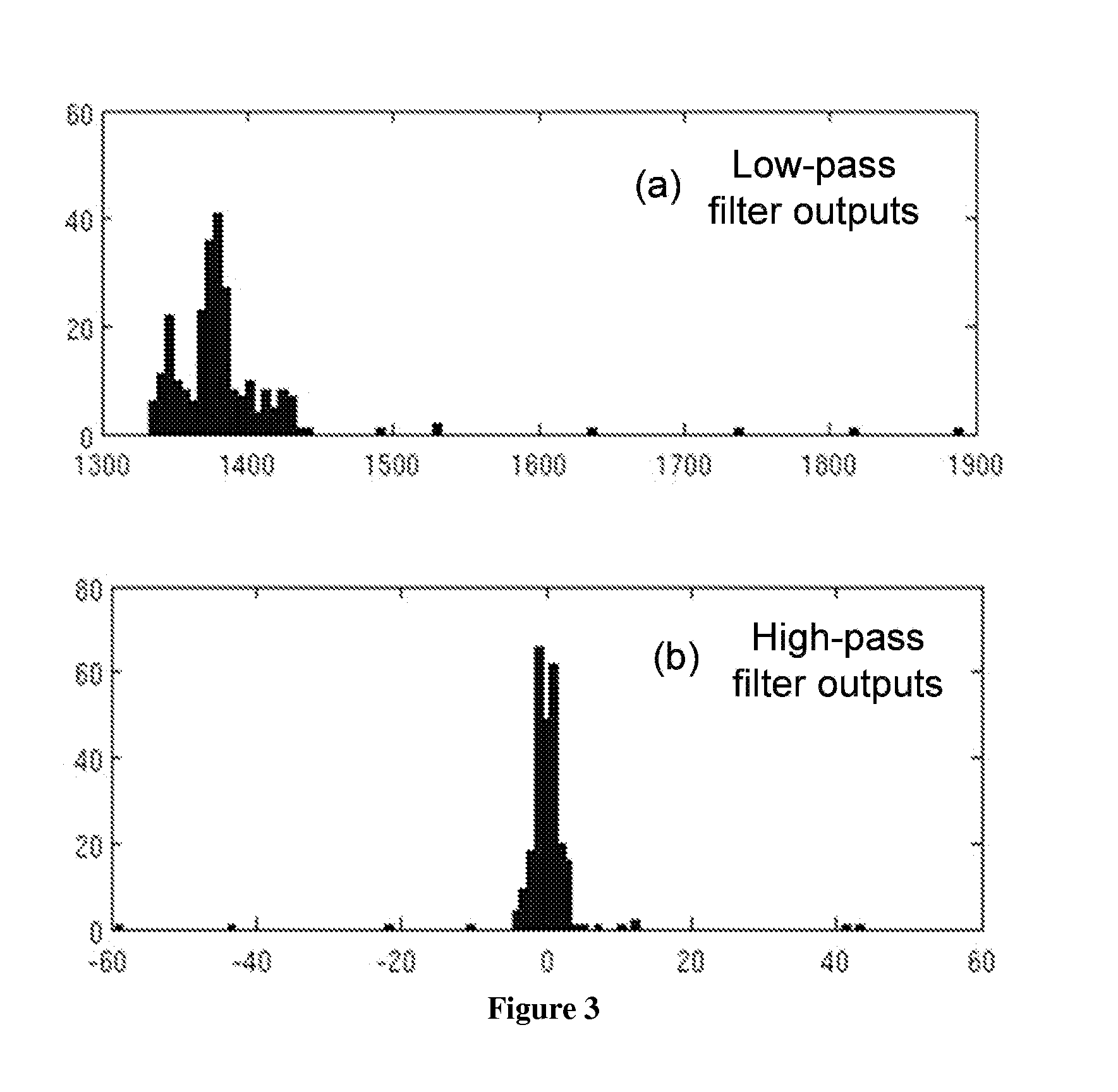Method and apparatus for low complexity spectral analysis of bio-signals
a biosignal and low complexity technology, applied in the field of signal analysis, can solve the problems of large and even prohibitive quality distortion, difficult to reduce complexity, etc., and achieve the effects of reducing complexity, large energy savings, and reducing complexity
- Summary
- Abstract
- Description
- Claims
- Application Information
AI Technical Summary
Benefits of technology
Problems solved by technology
Method used
Image
Examples
Embodiment Construction
1.4.1 Complexity Reduction Through Alternative Signal Representations
[0123]Changing substantially existing algorithm formulations by considering signal representations in domains where the signal may be (approximately) sparse could allow for a reduction of algorithmic complexity and thus energy.
[0124]The main idea of the proposed approach is illustrated in FIG. 1. Starting from a function F and a signal x the objective is to find a function G that transforms the input signal x to a new, equivalent representation x′, where the signal is approximately-sparse. By approximately-sparse we mean that in the new signal x′ only few signal components carry most of its energy. Therefore these few components are also most important for the overall signal quality, while other signal components and the associated computations can often be skipped for a significant complexity reduction. In other words, the transformation G not only exposes the unequal significance of different signal components bu...
PUM
 Login to View More
Login to View More Abstract
Description
Claims
Application Information
 Login to View More
Login to View More - R&D
- Intellectual Property
- Life Sciences
- Materials
- Tech Scout
- Unparalleled Data Quality
- Higher Quality Content
- 60% Fewer Hallucinations
Browse by: Latest US Patents, China's latest patents, Technical Efficacy Thesaurus, Application Domain, Technology Topic, Popular Technical Reports.
© 2025 PatSnap. All rights reserved.Legal|Privacy policy|Modern Slavery Act Transparency Statement|Sitemap|About US| Contact US: help@patsnap.com



